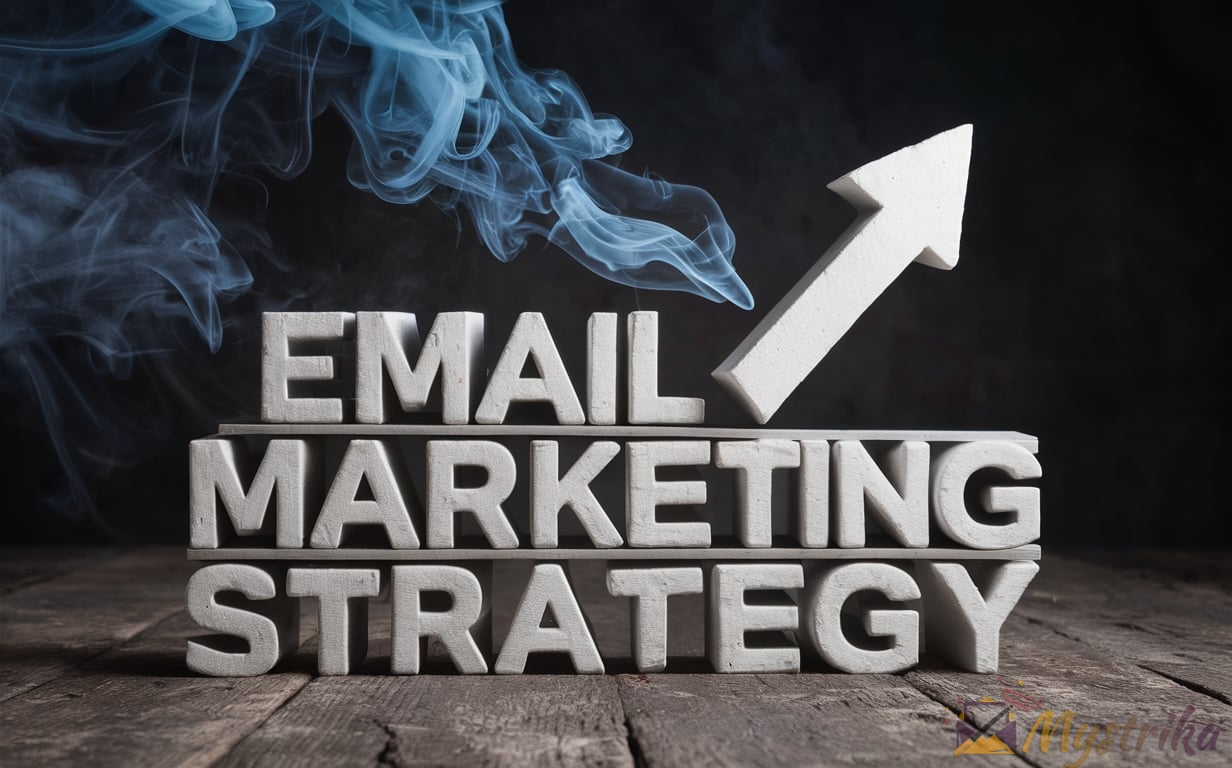Sending generic, one-size-fits-all emails is an easy way to get subscribers to tune out. In a world filled with endless distractions competing for attention, targeted email marketing is essential for cutting through the noise. This comprehensive guide will teach you how to craft captivating emails tailored to each user, boost engagement across every campaign, and transform email into your most powerful marketing channel. Follow along as we deep dive into list segmentation, audience research, email design principles, performance tracking, and more data-backed best practices for email dominance. With strategic targeting and relentless optimization, you can make every subscriber feel like your email landed in the right inbox!
Setting Goals and Objectives for Your Email Campaigns
Defining clear goals and objectives is the first step to crafting an effective email marketing strategy. Without tangible goals to work towards, you’ll just be shooting emails into the void.
Your email goals should align closely with your overall business objectives and where you want to drive growth. They give your campaigns purpose and direction. Here are some of the most common email marketing goals brands have:
Drive Website Traffic and Conversions
One of the top reasons brands invest in email marketing is to drive traffic to their website or product pages. Some statistics on using email to boost traffic and conversions:
- Email converts at a rate 3x higher than social media (MetricMail)
- 72% of customers prefer to receive promo offers through email over social media (Omnisend)
- Transactional emails have an average click-through rate of 45% compared to just 3-5% for promotional emails (Experian)
So whether you want visitors to read a new blog post or make a purchase, calls-to-action to visit your site can skyrocket website traffic.
Tactics to boost traffic and conversions include:
- Promotional emails – Offer deals, discounts or exclusive offers to incentivize clicking through
- Cart abandonment emails – Remind users about items left in their carts to complete checkout
- New product or feature announcement emails – Give previews and highlights before launch
- Content upgrade emails – Provide access to gated content in exchange for a web visit
Set specific metrics like a 15% increase in site traffic or a 5% lift in conversion rate to benchmark performance.
Increase Brand Awareness and Subscriptions
Growing your email list allows you to reach more potential customers directly in their inbox. Useful tactics for list-building include:
- Website popups and subscription forms
- Social media calls-to-action
- Giveaways and lead magnets in exchange for an email sign-up
- Retargeting visitors who left without subscribing
Airbnb executed this strategy brilliantly with a multi-channel campaign that led to a 5% increase in email subscribers through consistent branding.
Other objectives might be getting more social media followers, newsletter sign-ups, or increasing brand awareness. Set specific targets, like gaining 2000 new organic email subscribers within 3 months.
Promote Products, Services, Offers or Events
Email marketing is unmatched for promoting your latest offers and events. Consider setting goals like:
- Increase sales of [product] by 25% in Q3 with a targeted email campaign
- Generate 500 registrations for our upcoming [event] through email promotions
- Achieve a 15% open rate and 5% click-through-rate on our [big holiday sale] announcement email blast
When promoting events, coordinate your email marketing with social media and other channels for maximum impact. Multi-channel campaigns can deliver upto 200% higher engagement on average.
Nurture Leads and Engage Customers
Make your current customers feel valued by keeping them in the loop with company updates and exclusive perks.
- Send loyalty rewards, special members-only discounts or early access to products
- Share company newsletters, new features previews, or blog posts
- Create post-purchase nurturing sequences with tips for using your product
Econsultancy’s research shows 72% of companies believe email is core to their customer retention and loyalty strategies. Set goals around converting one-time buyers into repeat customers.
Collect Feedback and Survey Data
Asking for feedback shows customers that their opinions matter. Email surveys typically see 30-40% higher response rates over other methods. Goals might include:
- Get 500 survey responses within 2 weeks to guide our product roadmap
- Improve our NPS score from 50 to over 70 in the next quarter
- Increase customer satisfaction score by 10% by addressing feedback
Now that you know how to set effective email goals, the next steps will be researching your audience, developing targeted content, segmenting your lists, and executing campaigns to hit each goal. With detailed objectives defined from the start, you’ll have a clear path to email success.
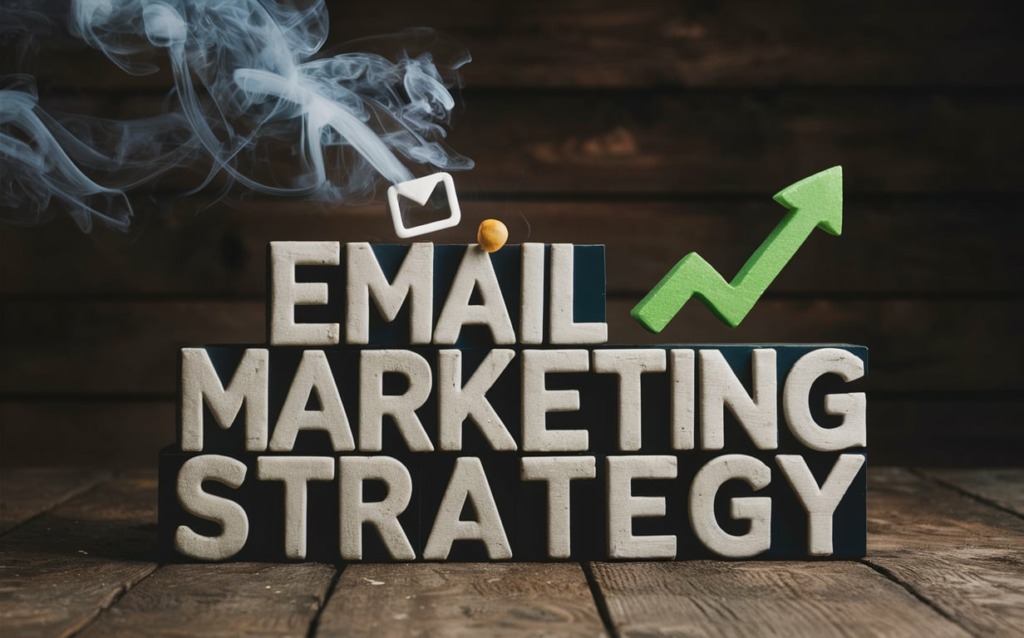
Researching and Understanding Your Audience
You can have the most brilliantly designed email campaign, but without an audience to send it to, it’s worthless. That’s why researching and understanding your subscribers is a mandatory step in email strategy.
Gather Customer Data and History
Start by collecting information about your existing customers:
- Contact details – name, email, phone number, mailing address, etc.
- Demographic data – age, gender, location, marital status, income level
- Psychographic profile – values, interests, personality traits, lifestyles
- Engagement metrics – email open and click rates, site visits, purchases
- Feedback data – survey responses, reviews, social media mentions
This data can come from sources like:
- CRM and sales records
- Email and website analytics
- Subscription and contact forms
- Digital surveys and feedback channels
- Social media listening
Aggregate and analyze this data to uncover user trends and common attributes. The more thoroughly you understand your customers, the easier it is to delight them.
Build Detailed Buyer Personas
A buyer persona encapsulates the key traits of your ideal target audience. While your customers are all individuals, personas help you group similar subsets together.
You can have multiple personas based on demographics, interests, or buying habits. Common persona types include:
- Role-based – Focused on job title (e.g. Head of Marketing, IT Manager)
- Behavioral – Based on actions and engagement (e.g. Product Researcher, Loyal Customer)
- Industry-focused – Tailored to company type (e.g. Retail Store Owner, Healthcare Provider)
Good personas are precise and detailed. Include relevant details like:
- Job title and role
- Location, age, income, education level
- Goals and challenges
- Common objections
- Preferred content format and channel
Netflix creates highly-detailed personas like “Asia” and “Data” to target content that resonates. The more precise your personas, the better you can personalize messaging.
Analyze Demographics, Interests, Behaviors
Look at demographic data like age, gender, income, geography, marital status, education level, occupation and more. While generalization should be avoided, understanding broad trends can help guide strategy.
Some examples:
- Baby boomers respond well to print and direct mail
- Millennials prefer digital and mobile communication
- New parents have interest in parenting products and tips
Track interests by seeing which content and products resonate best with subsets of customers. Adapt your email approach to align with their preferences.
You can also classify customers based on their engagement and behaviors using categories like:
- Active subscribers – Open and click most emails
- Passive subscribers – Lower engagement
- Unsubscribed – Opted-out or marked emails as spam
- Negative indicators – Bounced emails or abuse reports
Adjust how you communicate with groups based on their behaviors. For example, send re-engagement emails to inactive subscribers, but don’t continue mailing those who unsubscribed.
Identify Motivations, Pain Points and Preferences
Truly understanding your customers allows you to appeal to both hearts and minds. Key insights to uncover include:
- Core values and beliefs
- Passions and interests outside work
- Common challenges and pain points
- Shopping motivations – price, quality, convenience, etc.
- Brand preferences and loyalties
- Communication channel preferences – email, social, video, etc.
Surveys, interviews, and customer conversations help uncover this qualitative data to really “get” your audience as people. Feed it into your personas and email approach.
Armed with rich customer insights, you can craft content and campaigns that align with subscriber wants and needs. This is the path to superior results.
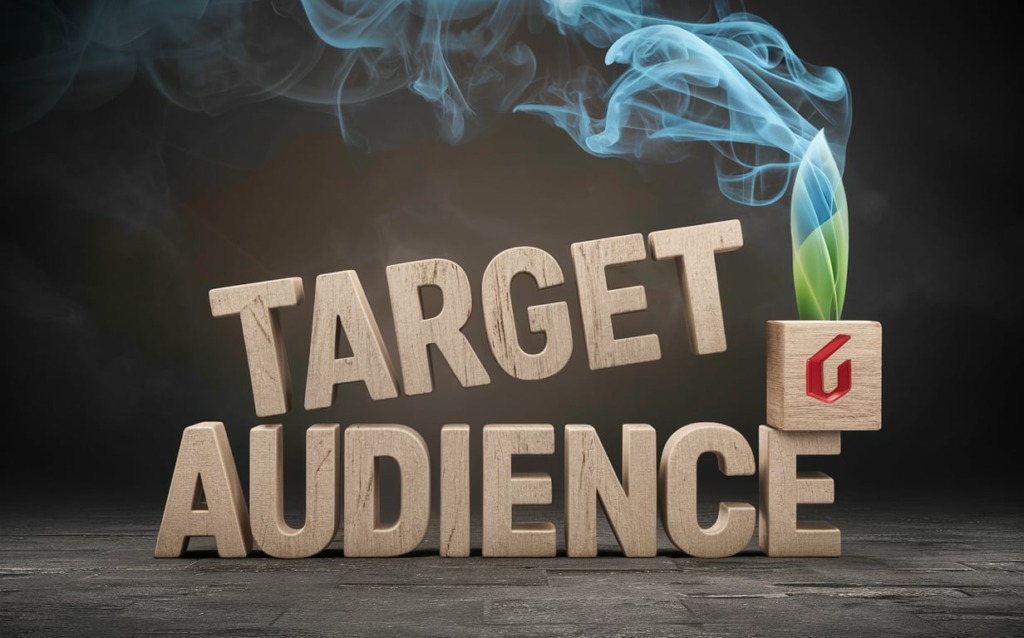
Developing Your Email Content Strategy
With clear goals set and deep audience insights gathered, it’s time to map out your email content strategy. Your content and messaging will make or break campaign success. Follow these best practices when developing your email content approach:
Plan Content Topics Around Audience Interests
Brainstorm content ideas and email themes tailored to subscriber wants and needs uncovered during your research.
For example, if you identified fitness enthusiasts as a core persona, useful topics could include:
- At-home workout tips and routines
- Healthy smoothie and post-workout shake recipes
- Reviews of new fitness gear and gadgets
- Interviews with athletes and trainers
Look at the content they already engage with to identify angles and topics that resonate. Align your email content taxonomy with their interests.
Craft Targeted Messages for Each Persona
Now that you have an editorial plan, adapt emails for different segments.
While a headline like “Our Biggest Sale of the Year!” might work for some groups, others may better respond to “Exclusive Discount for [Company] Loyalty Members.”
Use knowledge of each personas’ wants, needs, and pain points to influence word choice, offers, and angles. Speaking to their specific desires boosts engagement.
Personalize Subject Lines and Body Content
Individualized emails drive higher open and click-through rates. Personalize your emails using data like:
- First name
- Location
- Past purchases
- Browsing history
Subject line examples:
- Hey [First Name], check out this deal for LA residents!
- 30% off your next purchase of [recently viewed item], [First Name]!
In body copy, add personalized product suggestions, location-specific offers, or references to past interactions to show customers you appreciate them. But ensure personalization aligns with a user’s expectations based on their relationship with your brand.
Make Content Valuable, Educational and Actionable
Don’t make every email a sales pitch. Deliver real value through content. Useful approaches include:
** Educational content ** – How-tos, tips, guides, and resources they find useful
** Entertaining content ** – Quizzes, contests, engaging videos and more
** Exclusive content ** – Free downloads, discounts, early product access offered to subscribers only
** Upfront value** – Lead with the good stuff instead of burying it behind a pitch
Helpful over promotional – 80% useful info, 20% promo. Don’t hard-sell in every email.
Incentivize sharing – Encourage forwarding emails to earn rewards
Optimize Design and Layout for Engagement
Even the best content falls flat without good presentation. Follow design best practices:
Mobile optimization – Over 50% of emails are opened on mobile. Use responsive templates.
Scannable – Break up text with headings and bullets.
Good use of images – Relevant visuals can boost open rates by 200%. But keep images optimized for fast load times.
Quality over quantity – Avoid cramming too much content. Leave some white space.
Clear CTA buttons – Prominent, high-contrast buttons drive conversions.
Readable fonts – Lean towards simple, clean fonts like Arial and Verdana. Avoid ornate scripts.
Consistency – Maintain the same style, tone of voice and branding across campaigns.
With audience insights guiding your strategy, you can craft emails subscribers genuinely appreciate and engage with. Combine relevance with solid design, valuable content, and personalization for optimal results.

Segmenting Your Subscriber List for Relevance
Dividing your contacts into targeted segments is key for effective email marketing. Sending one generic blast to your entire list leads to low engagement and high unsubscribe rates. Segmentation allows personalized, relevant communication that drives results.
Divide by Demographics Like Age, Gender, Location
Basic demographic data allows simple segmentation. Categories like:
Age – Group into ranges like 18-24, 25-34, 35-44 etc. Useful for age-targeted content.
Gender – Divide into male and female segments for targeted messaging.
Location – Segment by country, region, city to localize content.
Language – Send localized translations to appeal to native speakers.
Marital status – Appeal to singles vs. married couples differently.
Income – Send higher-end offers to high-income segments.
Education – Tailor content complexity based on education levels.
Occupation – Align professional content to job roles.
Categorize by Interests and Preferences
Understanding your subscribers’ hobbies, passions, and preferences allows further segmentation.
Interest categories – Group by categories like health, food, travel, tech etc.
Purchased products/services – Target users based on past transactions.
Preferred content types – Send video content to video lovers, long-form articles to engaged readers etc.
Loyalty status – Separate new subscribers from VIP loyalty members.
Brand affinities – Align promotions and partnerships based on brand favorites.
Communication channel preferences – Message web-focused users separately from social-savvy fans.
Group by Past Purchases and Browsing History
Behavioral data offers powerful segmentation options.
Purchasers of [product] – Promote new releases to existing customers.
Abandoned cart – Win back users who didn’t complete a purchase.
Page visits – See which pages attract most engagement.
Content downloads – Offer related content to those who’ve downloaded assets.
Link clicks – Track interest based on resources accessed.
Search terms – See what users are looking for on your site.
Social sharing – Engage those who share and advocate your brand.
Separate New vs Existing vs Disengaged Subscribers
Managing users across the customer lifecycle requires separation by relationship stage.
New subscribers – Onboard and orient new users with value-first messaging.
Engaged – Nurture and reward highly engaged users.
Inactive – Re-engage dormant users with incentives to re-subscribe.
Unsubscribed – Don’t continue messaging those who opted-out.
Bounced – Remove invalid email addresses from your lists.
Negative indicators – Avoid messaging abusive users.
Segmenting by user lifecycle allows tailored journeys; attractive welcome offers to new users, relevant cross-sells for repeat purchasers, and win-back discounts for lapsed subscribers.
Lifecycle Stage Segmentation
Let’s look closer at how to engage users across the customer journey:
Welcome New Subscribers
- Thank subscribers for joining in a welcome email series.
- Educate on key brand facts, offerings, and resources in a natural way.
- Provide generous onboarding value before asking for a purchase.
Engage Existing Subscribers
- Continue nurturing repeat customers with loyalty perks and special offers.
- Send VIP subscribers exclusive previews, discounts, and partner promotions.
- Poll engaged users for product feedback to guide your roadmap.
Win Back Inactive Subscribers
- Offer time-limited discounts to re-engage dormant email subscribers.
- Ask for feedback on why their interest declined.
- Remove from lists if they remain inactive after re-engagement attempts.
Reward Loyal Brand Advocates
- Identify and cultivate high-value brand evangelists.
- Create a brand ambassador or insider program with cool perks.
- Amplify and highlight their social shares and testimonials.
So in summary, intelligent list segmentation is indispensable for targeted, relevant email marketing. Divide contacts based on demographics, interests, behaviors, and relationship stage for superior results.
Building Your Email Calendar and Cadence
With your strategy and content planned, it’s time to build your editorial calendar and schedule campaigns. A calendar provides structure and organization to execute your email approach seamlessly.
Map Out Dates for Campaigns, Promotions, Events
Start populating your calendar with all the campaigns, content assets, promotions, and events you want to promote via email. This might include:
- Email newsletters or ezines
- Content upgrade offers
- Webinars and events
- New product launches
- Holiday sales and promotions
- Store openings or season launches
Block out any external events or company milestones you want to align messaging with. Planning content tied to big moments ensures you don’t miss out on engagement opportunities.
Schedule Emails to Avoid Overwhelming Subscribers
Once you’ve mapped key dates, schedule individual emails. Avoid sending too many emails close together.
Recommended email frequency guidelines:
- 1 newsletter or promotional email per week
- 1-3 educational or value-add emails per week
- Transactional emails (order confirmations, password resets) as needed
Test to identify your subscribers’ optimal engagement cadence. Increase or decrease frequency based on open and unsubscribe rates.
Target different segments with unique content and schedules optimized to their preferences
Test Different Send Times and Days for Optimal Open Rates
Identify your best send times by testing. Some common high-performing windows include:
- Early morning – 6 AM to 9 AM
- Lunchtime – 11 AM to 1 PM
- Mid-afternoon – 1 PM to 3 PM
- Post-work hours – 5 PM to 7 PM
Tuesday, Wednesday, and Thursday tend to see higher open rates. Always test days and times yourself as subscriber patterns vary.
Tools like Email Analytics make A/B testing easy. Try variations like:
- Sending Tuesdays vs Thursdays
- 8 AM vs. 5 PM
- Daily vs 2x per week
Stick with the day and time that deliver the best results consistently.
Email Calendar Best Practices
Keep these tips in mind when building your calendar:
- Use an editorial calendar template to organize everything visually in one place.
- Plan at least 2 months of content in advance for a consistent pipeline.
- Schedule emails to avoid major holidays or dates when engagement is lower.
- Co-ordinate email promotion of events along with your social media calendars.
- Hold bi-weekly/monthly meetings to ideate fresh content and update calendars.
- Set calendar reminders to brief your team on upcoming email campaigns and expectations.
- Revisit calendar performance often and adjust your cadence as needed.
With a streamlined calendar, your email marketing will be consistent and high-quality, without becoming overwhelming or repetitive.
Email Marketing Automation and Workflows
Executing multi-step email campaigns manually is tedious and error-prone. That’s where marketing automation comes in – to streamline complex processes and workflows.
Streamline List Building and Management
Automation eliminates manual tasks in building and managing your subscriber list.
List growth – Embed opt-in forms on your site to automatically capture new contacts as they browse and convert.
List hygiene – Automatically remove hard bounces and abuse reports to maintain deliverability.
Data organization – Tag and segment contacts based on behaviors for easy segmentation.
Lead scoring – Set rules to automatically grade leads so you can nurture accordingly.
Set Up Triggers and Sequences for Different Segments
Complex multi-touch journeys are simple to execute with automation based on triggers.
Event-based – Send post-purchase follow-ups when a transaction occurs.
Time-based – Schedule weekly newsletters or onboarding drips.
Behavior-based – Re-engage dormant subscribers who haven’t opened in 2 months.
Integration-based – Notify sales when a lead hits 50% of your scoring threshold.
Multi-channel – Send an SMS reminder to register after email invite.
Cross-channel – Re-target website visitors with ads if they left without opting in.
Personalize Content with Dynamic Fields
Merge tags allow easy personalization at scale across communication touchpoints.
Individual data – Include first name, location, company name.
Behavioral data – Reference past purchases, content downloads.
Temporal data – Call out subscriber anniversary, birthday.
Dynamic content – Vary product images/text based on user attributes.
Personalization should align with subscriber expectations and relationship stage. Don’t get too familiar too fast before establishing trust.
Recover Abandoned Carts with Cart Emails
Cart abandonment emails help recover lost sales opportunities. Automate the process:
- User adds items to cart but doesn’t check out.
- Triggered email is sent reminding them of items left behind.
- Email includes saved cart contents, discount offer if not purchased in 24 hrs.
- User clicks email, completes purchase.
Timely and relevant cart recovery emails can result in over 25% of abandoned carts converted back into sales.
Integrations and Connections
Workflows easily connect other systems and data sources:
CRM Data for Subscriber Preferences and History
Pull subscriber details into emails for better personalization:
- Contact info, company name
- Lead score and lifecycle stage
- Previous purchases and support tickets
Commerce Platforms for Order Data and Syncing Product Catalogs
Leverage real-time order data to trigger post-purchase emails with:
- Order confirmations and shipping details
- Cross-sell recommendations based on purchases
- Review requests on delivered items
Sync product catalogs to dynamically showcase best-sellers.
Website and Blogs to Collect Contacts and Trigger Broadcasts
Embed opt-in forms to automatically grow your list from site traffic. Trigger automated campaigns when specific events occur, like:
- New blog published
- Product launched
- Ebook downloaded
- Event registration
In summary, email automation and workflows save enormous time while delivering highly personalized and targeted email marketing efforts. Connect them across channels and systems for maximum impact.
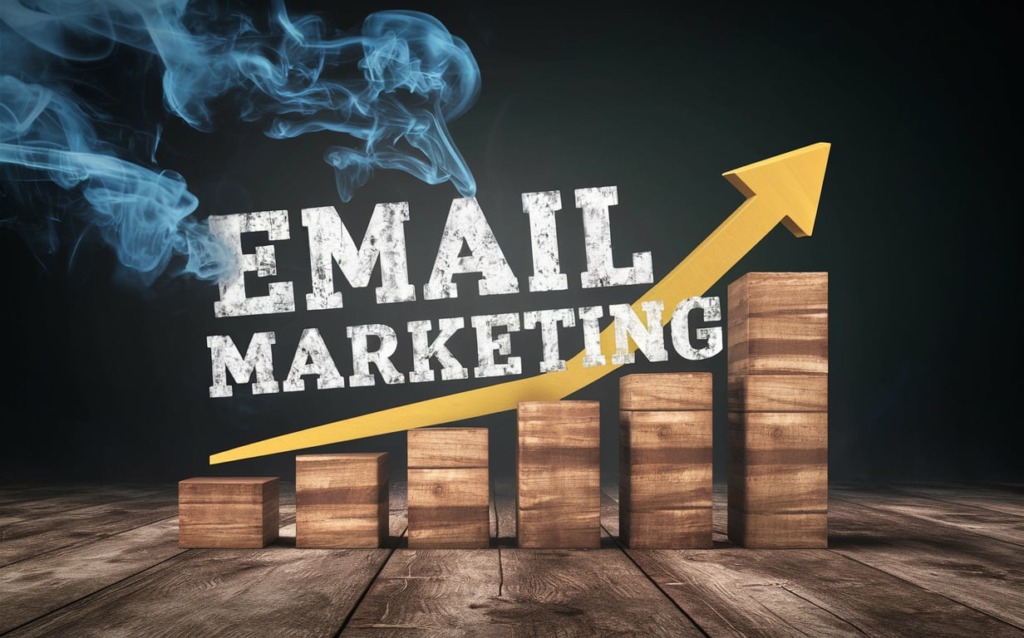
Designing and Optimizing Your Emails
Even the most brilliant email marketing strategy falls flat without good design and presentation. Follow these tips when designing your emails for maximum impact:
Compelling and Benefit-Driven Subject Lines
Your subject line is the first touchpoint with subscribers – so make it count. Strong email subject lines:
- Clearly communicate the core benefit/offer upfront
- Use power words that compel action – “free”, “new”, “sale”, etc.
- Leverage curiosity and intrigue – “One new thing you must try…”
- Personalize when possible – “Hey [Name], your gift is here!”
Always optimize and A/B test subjects. Tools like Email Subject Line Grader identify improvements.
Clear Calls-to-Action and Email Sign-Off
Every email needs a clear CTA to guide the next step. Design tips:
- Lead with a strong hook and value statement before the CTA
- Use action-oriented button copy – “Download now”, “Learn more” etc.
- Make the CTA button colorful and high-contrast.
- Include a clear sign-off above unsubscribe links.
Mobile-Responsive Templates and Layouts
With over 50% of emails opened on mobile, a responsive design is a must.
- Use a fluid, mobile-optimized email template.
- Horizontal scrolling is a deal-breaker on mobile.
- Resize and reorganize elements for small screens.
- Link CTA buttons for easy tapping on mobiles.
Preview on multiple devices to catch render issues.
Effective Use of Images and Videos
Relevant visuals boost engagement when used judiciously.
- Include one clear, hero image at the start of your email.
- Break up text-heavy sections with applicable photos.
- Ensure images are crisp and render correctly across devices.
- Videos help showcase products/services but should load fast.
- Don’t let images bloat email size and hurt deliverability.
Signs of a High-Quality Email
What sets great emails apart?
Valuable and Relevant Content
Every email should provide subscriber value – not just sales pitches. Offer exclusive tips, insider news, or discounts.
Personalized Messaging
Leverage merge tags, behavioral data, and user references to individualize emails. But stay within reasonable expectations.
Good Mix of Text, Visuals and White Space
Every element should enhance user experience. Leave room to breathe between sections.
Clear Brand Identity and Voice
Maintain consistent style, tone, fonts, colors, and voice across all campaigns.
Links to High-Authority Resources
Cite credible media, statistics, and links from trusted brands to build authority.
In summary, a well-designed email aligns visual presentation with the value and intent communicated through your words and links. Master both for world-class email marketing campaigns.
Email Performance Metrics and Testing
The best email marketers continuously track campaign analytics and run tests to improve performance. Key metrics to monitor include:
Open, Clickthrough, and Conversion Rates
These basic engagement metrics indicate how well your email resonates.
Open rate – Percentage of recipients who opened the email. Industry averages range from 15-25%.
Clickthrough rate (CTR) – Clicks on links inside the email, divided by total emails sent. 2-5% is typical.
**Conversion rate **- Percentage of opens/clicks leading to a desired action like purchases. Varies based on business model.
Compare metrics over time and optimize lagging areas. For example, low CTR could indicate unclear CTAs.
Unsubscribe and Complaint Rates
You want to minimize opt-outs and spam complaints:
- **Unsubscribe rate – **Percent of subscribers choosing to leave your list. Benchmark below 0.2% per campaign.
- **Complaint rate – **Percentage of recipients marking your email as spam. Keep under 0.1%.
High rates hurt deliverability. Evaluate your content relevance and sending behaviors if they spike.
A/B Test Subject Lines, Content, Timing
A/B tests identify the best-performing email components for your audience. Test variables like:
- Subject lines – Evaluate different headlines, lengths, emojis.
- Content – Compare sections, offers, images, CTAs.
- Timing – Weekday vs weekends, morning vs. evenings.
- Layouts – Sidebar vs horizontal images, desktop vs mobile.
Tools like Email Studio make split testing simple at a large scale. Refine based on data.
Evaluate Against Past Campaign Results
Look at historical performance when assessing a campaign’s success. Metrics to compare include:
- Open, clickthrough, unsubscribe rates vs. averages
- CTR by link – See which links get the most clicks
- Conversion rates on promotions – Track sale conversion
- Device-wise metrics – Evaluate desktop vs mobile engagement
If results skew negatively, re-evaluate your audience targeting, content, and design choices.
In summary, email analytics coupled with relentless testing ensures you always send your best. Optimize every campaign and continuously improve subscriber experience.
Improving Your Email Deliverability
For email marketing success, your messages must reliably reach the inbox. Deliverability depends on your sending reputation. Follow these tips to maintain stellar deliverability:
Proper Authentication and Security Protocols
Full email authentication confirms you as a legitimate sender. Steps include:
**SPF records **- Prevents sender address spoofing. Explicitly authorizes sending servers.
DKIM signatures – Validates email wasn’t tampered with in transit. Links domain to email contents.
DMARC policies – Specifies actions if emails fail SPF/DKIM checks to control abuse.
HTTPS/TLS – Encrypts email traffic end-to-end for security and privacy.
Subscription confirmation – Verify opt-ins via confirmation emails or double opt-in.
Permission reminders – Periodically re-confirm subscriber consent.
Proper authentication signals your professional, ethical sending practices.
Managing Subscriber Engagement and Hygiene
Keep your lists healthy by monitoring engagement and removing bad addresses.
- Remove hard bounces immediately to avoid continued futile sends.
- Prune subscribers who haven’t opened in 6+ months with re-engagement campaigns first.
- Provide easy unsubscribe links in emails and honor opt-out requests promptly.
- Limit sending frequency and don’t overwhelm subscribers leading to complaints.
- Segment your list by engagement level – more for engaged, less for inactive.
Maintaining list hygiene ensures you waste no resources emailing the uninterested.
Monitoring Factors Like Spam Complaints
Watch for rising spam complaints that hurt sender reputation. Causes include:
- Sending to purchased, rented or scraped email lists
- Using misleading subject lines or content
- Inappropriately emailing customers who didn’t consent
- Sending at very high volumes exceeding contact preferences
- Generating hard bounces by emailing invalid or expired addresses
Carefully evaluate the reason before spam complaints pile up.
Reputation Management
Proactively guard your domain and IP reputations.
Avoiding Blacklists with Good Sending Practices
Get listed by spam filters like Spamhaus or blacklist wildcards, and you won’t reach any inboxes. Safeguard your brand by:
- Strictly acquiring contacts through confirmed opt-in only
- Honoring unsubscribe requests immediately
- Quickly fixing causes of complaints instead of ignoring issues
- Monitoring IP and domain sender reputation regularly
Handling Bounces and Opt-Outs
Every bounced email and opt-out hurts your sender score.
- Remove hard bounce addresses that will continue failing
- Scrub lists against the Email Validation API to maintain list hygiene
- Honor opt-out requests right away instead of sending to uninterested subscribers
Warming Up New Sender IPs and Domains
New, unused IPs and domains have no positive sending history. Take it slow:
- Start sending small volumes first – 50-100 emails daily
- Only send to engaged subscribers who expect your emails
- Slowly increase volumes as reputation builds over 4-6 weeks
- Avoid large blasts until you’ve established a good sender score
In summary, deliverability is a marathon, not a sprint. Take proactive, ethical steps to become a trusted sender with an impeccable record.
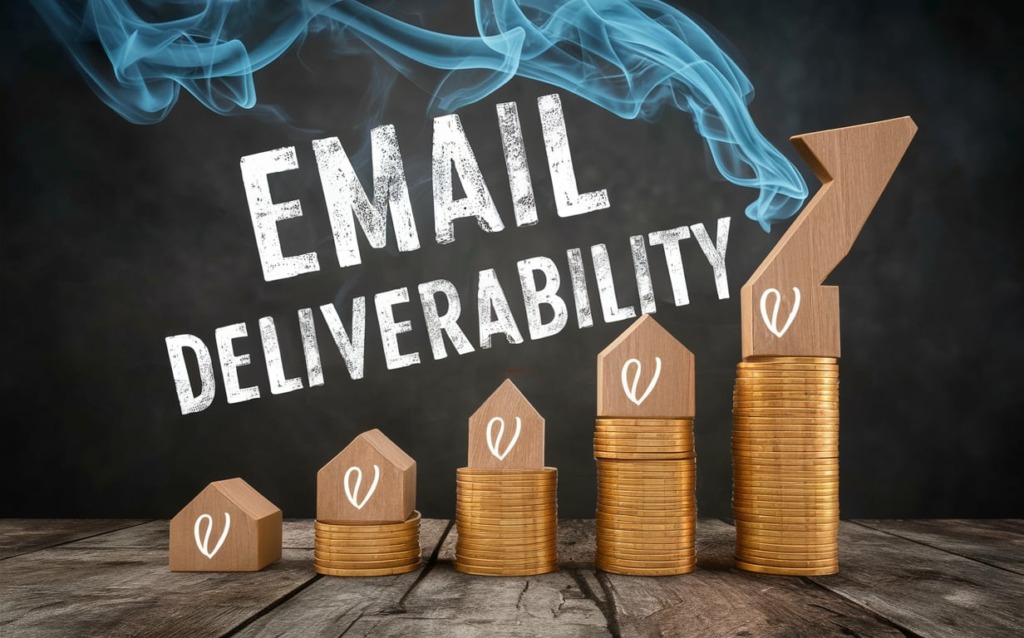
Putting It All Together – Execution and Follow-Up
With your strategy mapped out, it’s go time! Follow these tips for effective execution and ongoing optimization:
Send Targeted Campaigns to Channelized Subscriber Segments
Always avoid the spray-and-pray approach. Execute campaigns tailored to specific subscriber segments only.
For example, send your abandoned cart recovery email flow only to users who recently abandoned their order. Or, promote a new hiking boots line just to subscribers who purchased hiking gear in the past 6 months.
Targeted, relevant messaging is table stakes for email success today. Mass blast everyone, and most will tune you out.
Monitor Performance and Iterate Based on Results
After sending a campaign, dive into the metrics immediately:
- Identify engagement levels – Which segments saw good open and click-through rates? Which didn’t seem interested?
- Review conversions – Did the campaign drive the desired actions and ROI? If not, what fell short?
- Check deliverability – Note unsubscribe rate. Did spam complaints spike?
- Find weak points – Was the subject stale, content irrelevant, or CTA weak?
Use insights to adjust elements that underperformed before your next send. Small tweaks compound over time.
Use Workflows to Automate Multi-Email Journeys
Set up workflows to execute the multi-touch narratives you outlined earlier. For example:
- Welcome Series – 4 educational emails over 2 weeks to onboard new subscribers
- Cart Abandonment – 3 emails over 5 days with increasing discounts
- Event Promotion – 4 emails building excitement leading up to the event
Automation ensures consistent execution at scale, freeing you up for strategy.
Continue Optimizing and Testing to Improve Over Time
Treat every campaign as a learning opportunity for the next one. Ways to optimize:
- Review email and visitor analytics to identify engagement bottlenecks.
- A/B test email components like subject lines, content sections, send times.
- Poll subscribers directly for feedback on your emails.
- Monitor complaints and spam reports to course correct issues.
- Track links clicked to tailor content to reader interests.
- Refine segments and personalization to increase relevance.
With an inquisitive, data-driven approach, your email marketing will continue improving.
Legal and Privacy Considerations
Never lose sight of legal requirements when executing email campaigns:
Complying With Anti-Spam and Data Privacy Regulations
- Only email users who explicitly opted in to receive your communications.
- Allow easy unsubscribes on all emails and stop emailing anyone who opts out.
- Follow data retention and protection laws for subscriber details.
Clear Unsubscribe Process on All Communications
- Have a visible, one-click unsubscribe link in the footer of every email.
- Make opting out of emails and texts easy from your website too.
- Don’t try to prevent or complicate the opt-out process. This gets you blacklisted.
Only Emailing Users Who Have Given Explicit Consent
- Don’t import lists bought from third parties or acquire contacts through deceptive means.
- Be transparent upfront on why subscribers are providing their email address and how you’ll use it.
In summary, respect your subscribers, comply fully with regulations, and you’ll build campaigns that engage and convert responsibly.
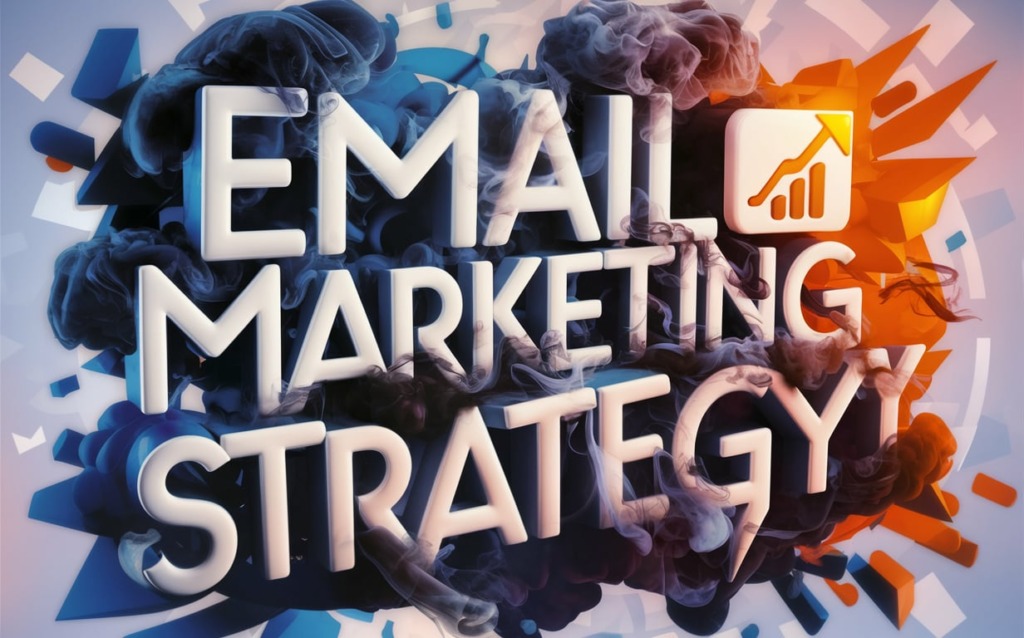
Key Takeaways
Crafting an effective email marketing strategy requires multiple steps done right. Here are the key lessons:
Define your goals – Connect your email objectives to overall business goals. Focus on driving traffic, conversions, leads, or other measurable outcomes.
Research your audience – Leverage subscriber and customer data to build detailed buyer personas. Send content tailored to their interests and preferences.
Plan targeted content – Develop an editorial calendar for campaigns, newsletters and promotions. Personalize messaging to different segments.
Segment your lists – Division by demographics, behaviors and other attributes ensures maximum relevance. Welcome, nurture and re-engage users based on relationship stage.
Schedule campaigns strategically – Use an email marketing calendar to plan sends avoiding overwhelm. Test for optimal days and times.
Automate workflows – Use automation to streamline complex multi-touch narratives and provide personalized experiences.
Design for engagement – Well-designed, mobile-optimized emails with compelling content inspire user action.
Test and optimize – Continuously experiment with email components through A/B splits and refine based on data.
Maintain deliverability – Follow best practices in list management and security protocols to build sender reputation.
Measure metrics – Track opens, clicks, conversions, unsubscribes, spam rates and ROI to gauge effectiveness.
Review and iterate – Analyze performance after every campaign and optimize weaker points for the next one.
With this checklist and the detailed sections in this guide, you now have a complete framework to craft a winning email strategy that converts and engages your audience.
The key is relentless testing and improvement. Treat every email as an opportunity to refine your approach and progress towards your targets. With an inquisitive and nimble mindset, your email marketing skills will continue to evolve and grow.
Frequently Asked Questions
Q: How do I build my email list?
A: Use website opt-in forms, social media, giveaways, website pop-ups, importing existing customers, and other tactics to build your mailing list. Only email people who explicitly consented.
Q: What is a good email open rate?
A: Industry averages range between 15-25% open rate. Rates vary by industry and audience. Track your own average rates rather than relying on benchmarks.
Q: How often should I send emails?
A: 1-2 times per week is ideal for newsletters. Send other value-add or transactional emails as needed. Test frequency and gauge engagement to identify the right cadence.
Q: What is deliverability and why does it matter?
A: Deliverability is your email reaching the subscriber inbox vs. spam folder or not arriving at all. High inbox placement depends on your sender reputation. Authentication and list hygiene are key.
Q: How do I segment my email list?
A: Divide your list by demographics like age and location, interests like past purchases, behaviors like email engagement, buyer lifecycle stage, and other relevant attributes.
Q: What makes an email spam?
A: Factors include buying email lists, misleading content, inappropriate messaging, user complaints, sending to unsubscribed users, and more. Avoid anything unethical.
Q: How can I automate my email campaigns?
A: Marketing automation platforms help you set up triggers and multi-step workflows to send targeted and personalized emails at scale.
Q: What metrics are important for email marketing?
A: Track opens, clickthroughs, conversions, revenue, ROI, unsubscribe rates, spam complaints, device engagement, click maps, and other KPIs to optimize.
Q: How do I improve my email strategy?
A: Continuously test and refine through split testing, subscriber surveys and feedback forms. Analyze performance to identify weak points and optimize them.

